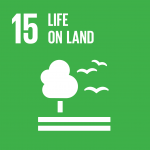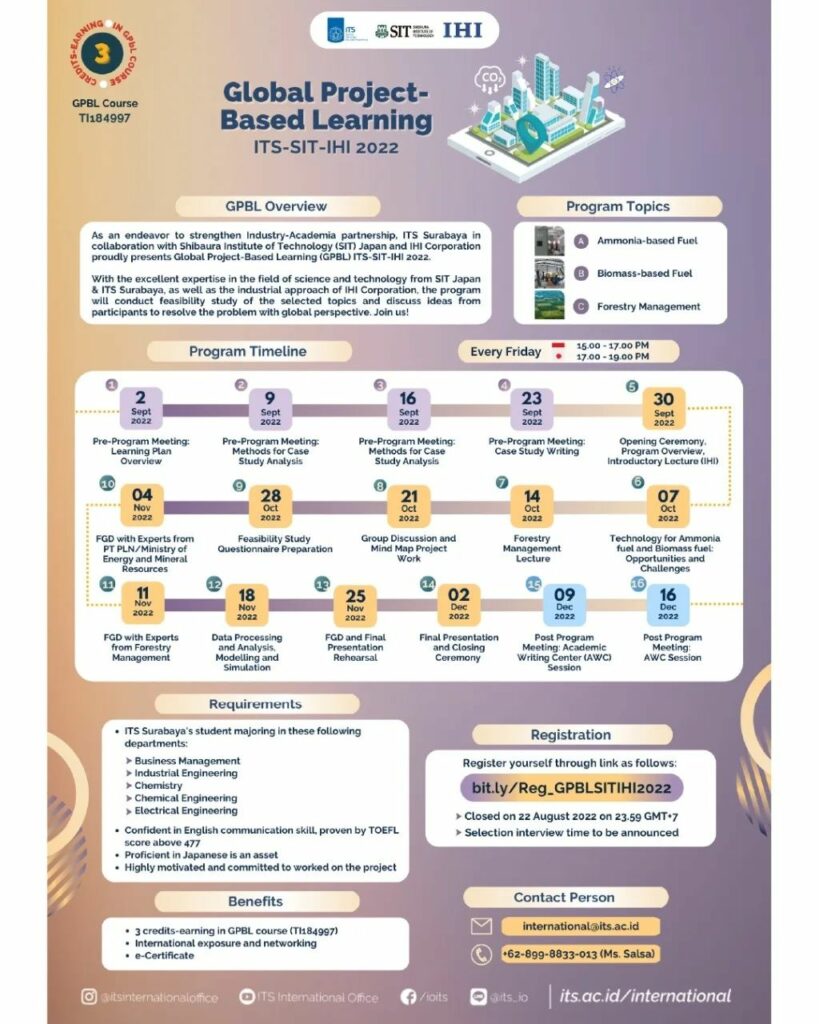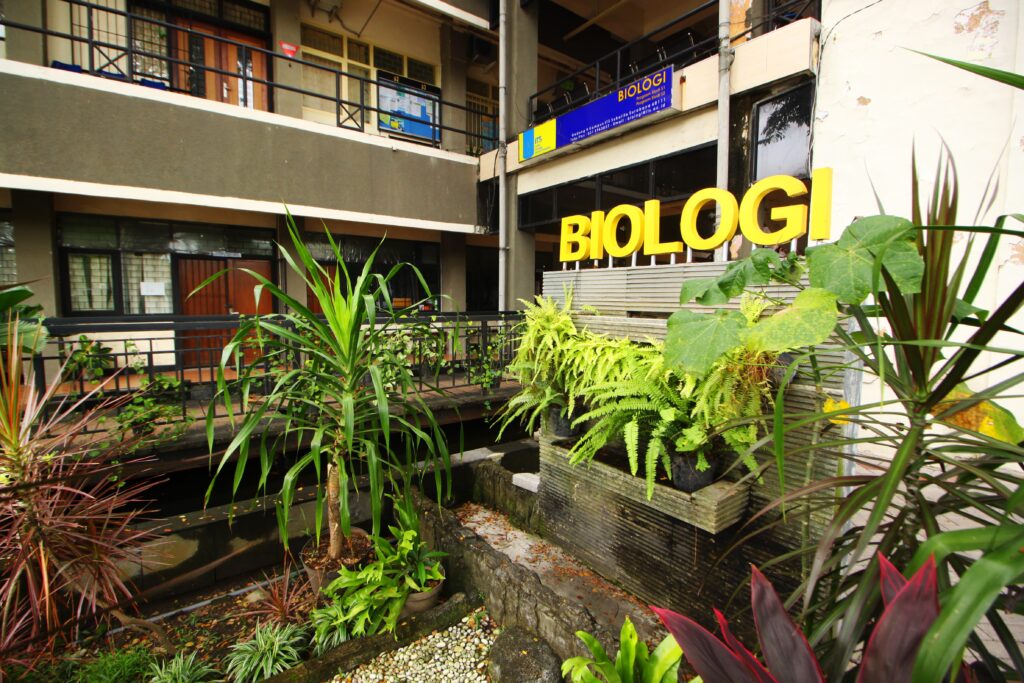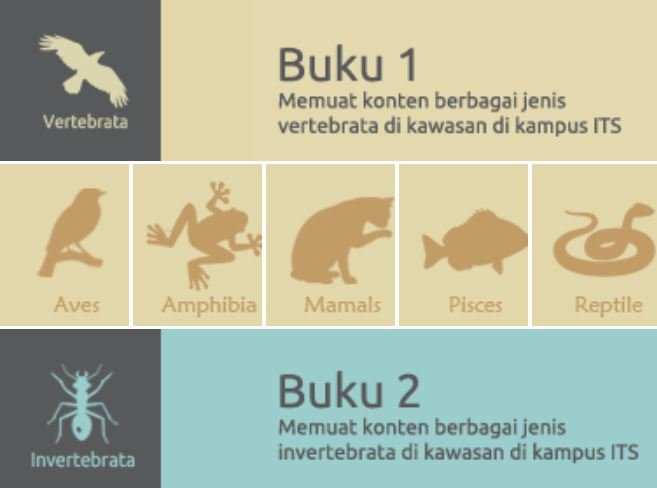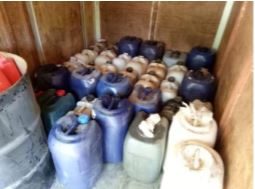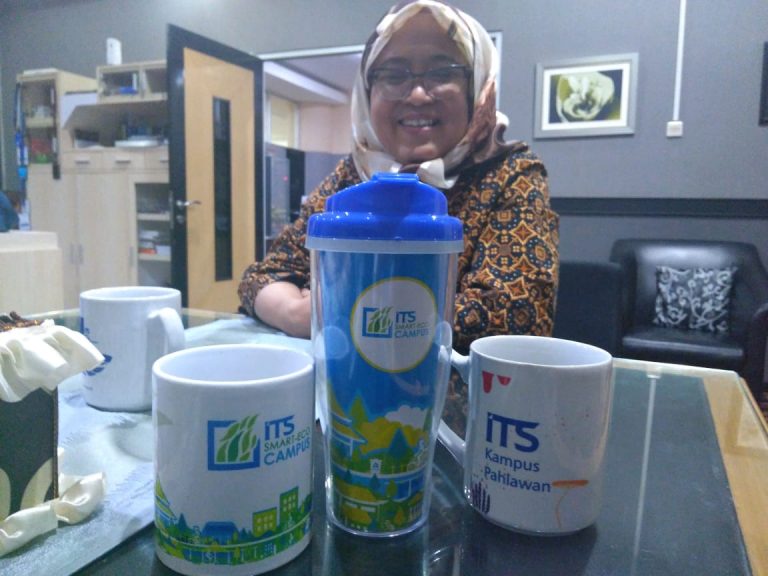“This is the second of two SDGs that look at the broader ecosystem – the other being SDG 14: Life Below Water. Life on land is a precious resource – we need to ensure that it is passed on to future generations, at a time when loss of biodiversity is an increasing concern. Different universities will have responsibility for very different landscapes and the life within, but all have a responsibility as stewards of their environment.”
(THE Impact Rankings)
SDG 15: LIFE ON LAND
Supporting Land Ecosystems through Education
Green Campaign by ITS Student Executive Board for National Earth Day
As students, we realize that it is important to protect the environment by increasing awareness of the environment, one of which is by greening. Therefore in the framework of National Earth Day, ITS students invite Surabaya residents to plant three hundred tree seedlings and plants in the Mangrove Botanical Garden.
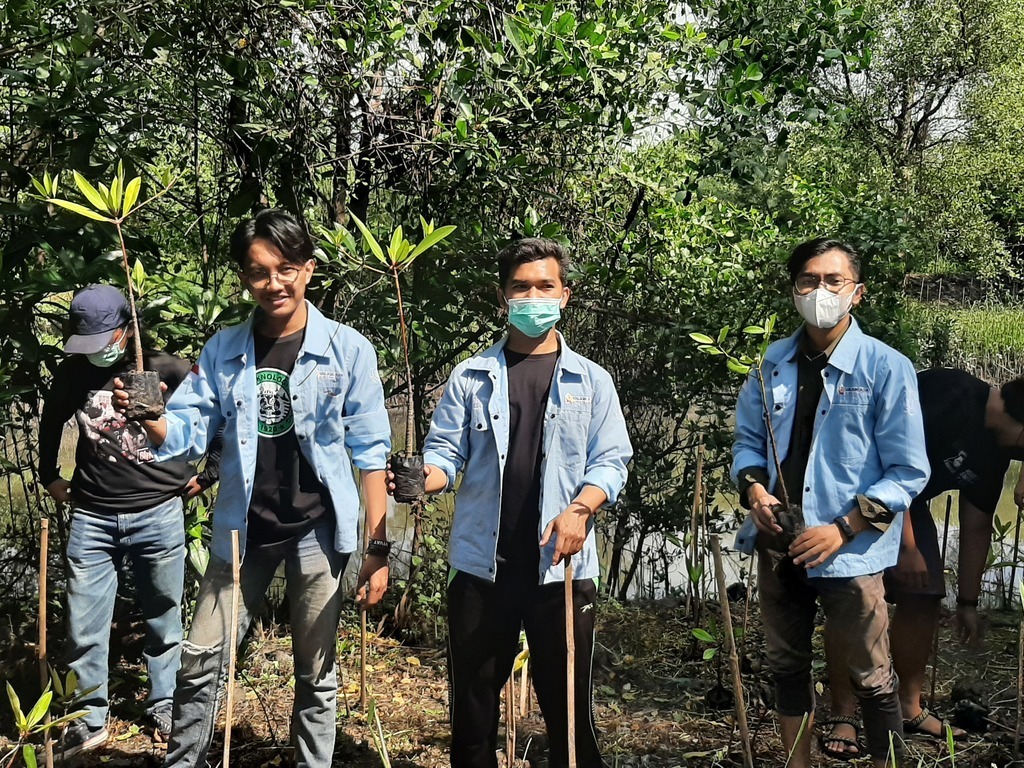
Facing Climate Crisis, ITS Restores Coastal Environment
One of the causes of the climate crisis is the destruction of ecosystems in coastal areas. One way to overcome this is by restoring blue carbon in coastal areas. With an event called ITS Green Action, ITS students carried out coastal restoration by planting mangroves and seagrasses whose seeds were obtained from volunteers around the coast. Mangroves were chosen because they absorb carbon three times more than other plants.
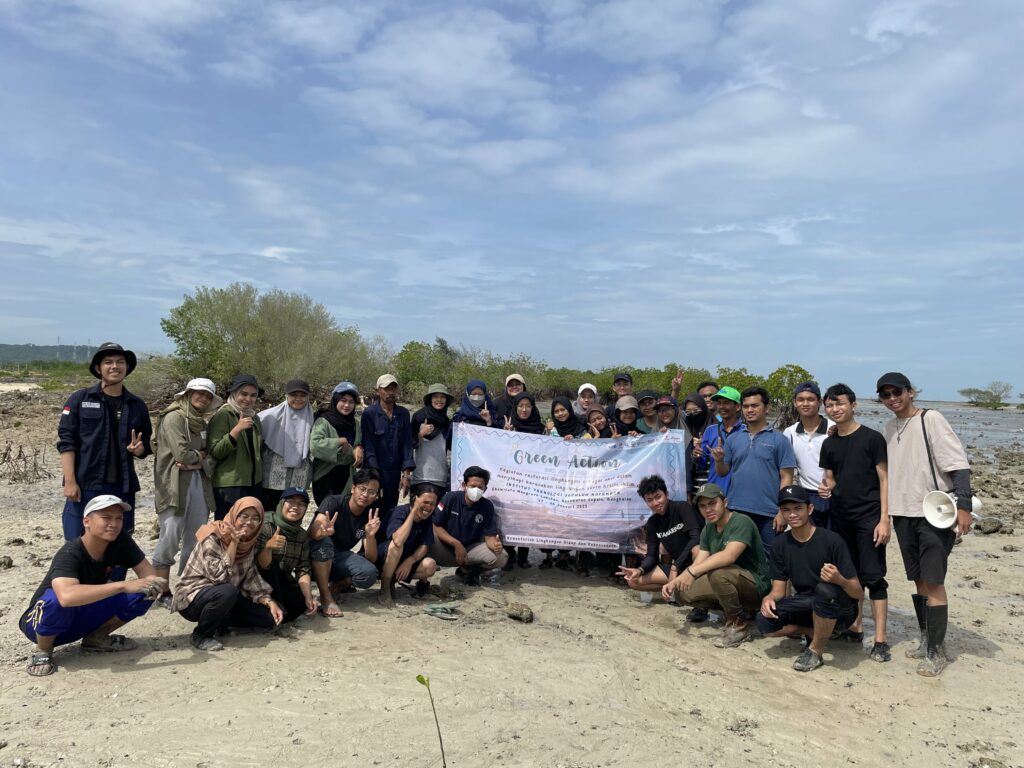

ITS with its “Advancing Humanity” motto is committed to contributing to the achievement of SDGs by becoming a sustainable and environmentally friendly campus. The commitment is shown by the establishment of the Rector’s Statement Letter in achieving the Sustainable Development Goals. According to Chapter 3 Point n, ITS encourages the realization of the provision of clean and healthy canteens by ensuring that all canteens on campus use raw materials that meet health standards and are environmentally friendly obtained from the process of livestock and fishery activities that meet animal ethics. ITS can use agricultural items from ITS Urban Farming to provide food supplies. The products of ITS Urban Farming can be used as ingredients in food preparation canteens on the ITS campus. With effective utilization, sustainability farmed food on campus will be maintained.
Rector’s Statement Letter in achieving the Sustainable Development Goals
Urban Farming for Food Preparation Canteens on The ITS Campus
Support The Conservation of Biodiversity, ITS Innovates Smart Surveillance
A good monitoring system is one of the most important things in implementing forest conservation. To integrate the monitoring system into the barcode system, KKN Community Services Program (KKN-PM) team from Institut Teknologi Sepuluh Nopember (ITS) initiated digitalization to facilitate regular monitoring systems by forest area managers. The team under Iska Desmawati SSi Msi as supervisor created a barcode that showed information related to the flora such as species name, distribution, rarity status, age, general description, and plant benefits in real-time or based on actual time. This barcode helps the manager of the Sumber Pawon Forest area can monitor the flora in the forest online.
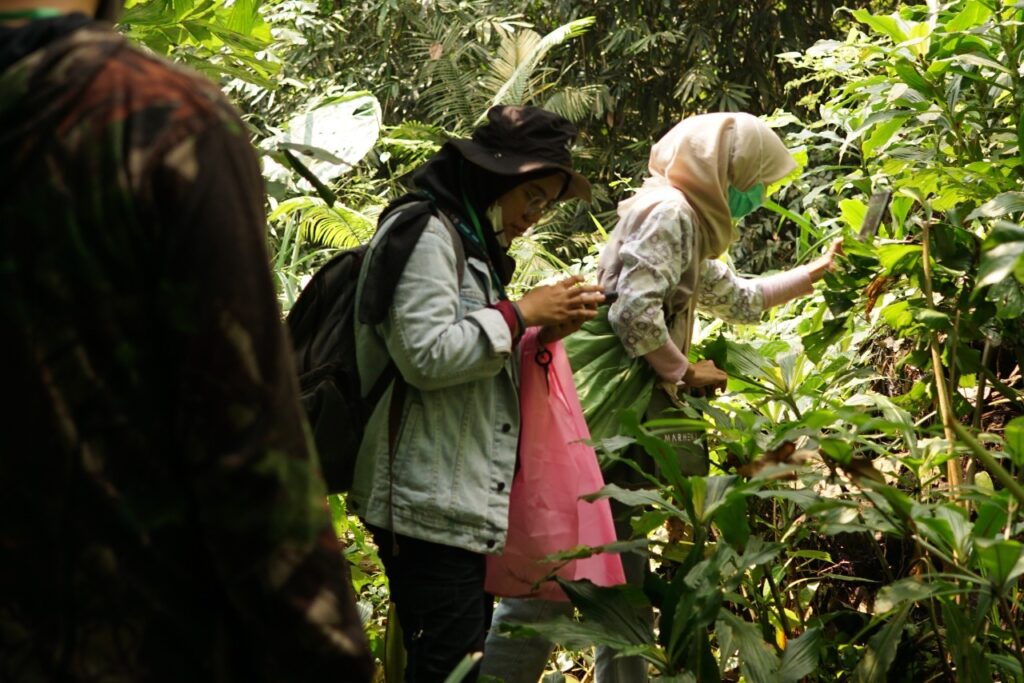
ITS Supports National Conservation and Manages Ecosystems and Biodiversity in The Campus Environment
The rector’s letter Number T/38539/IT2/TU.00.08/2021 Chapter 3 Point H, I, J, and K states that in order to realize the Institut Teknologi Sepuluh Nopember as a sustainable and environmentally sound campus in achieving sustainable development goals, it is committed to applying sustainable and environmentally sound principles. In terms of maintaining and extending existing ecosystems and their biodiversity, its regulation states
- Institut Teknologi Sepuluh Nopember guarantees that no invasive alien species enter the campus.
- Institut Teknologi Sepuluh Nopember pursues activities to identify, monitor, and protect IUCN Red List species and national conservation list species affected by activities on campus.
- Institut Teknologi Sepuluh Nopember participates in the existence of vulnerable ecosystems and plays a role in the existence of vulnerable ecosystem management (wetlands, mangroves, peat).
- Institut Teknologi Sepuluh Nopember considers local biodiversity in the physical development of the campus.
Learn Forestry Management Through GPbL
Recognizing the importance of environmental conservation, ITS spreads awareness about the environment through education, which is the main field of this campus. One of the programs from ITS that introduces ecosystems is Global Project Based Learning (GPbL) which was initiated together with the Shibaura Institute of Technology Japan. The program also collaborates with the company IHI Singapore. GPbL ITS-SIT-IHI 2022 carries learning about forest ecosystem management which is attended by students from SIT Japan, Nihon University, Gajah Mada University, and Institut Teknologi Sepuluh Nopember. The material on Forestry Management was presented by Dwiko Budi Permadi, S.Hut., M.Sc., Ph.D and Widiyatno, S.Hut.M.Sc., Ph.D.
Supporting Conservation Through Learning
One of ITS’s efforts to provide education about the importance of protecting ecosystems is to provide learning through daily lecture material. For example, one of the departments at ITS, the Biology department, has a course called Conservation Biology. This course teaches the concept of conservation and biodiversity so that they can think critically in appreciating the biodiversity, both in terms of ethics, tourism and ecological services. In terms of extinction and the consequences of a small population, students are expected to understand well the factors affecting extinction and its relation to scarcity in small populations. So that students are able to estimate it according to the concept of minimum viable population and develop an understanding of the concept through case study presentation refers to journals, scientific articles. In the selection of conservation areas, students are expected to develop an understanding of the previous concepts in considering the selection of conservation areas. In the last week on various issues related to biodiversity conservation and its management, students are able to think critically about the methods and technologies that have been used in biodiversity management. Ultimately students are able to identify problems and provide appropriate decisions for the conservation and management of the biodiversity.
ITS Prepares Masterplan Geopark Bromo Tengger Semeru (BTS) with Bappeda of East Java Province
Indonesia has many potential tourist areas and one of them is the Bromo Tengger Semeru area. ITS sees this area as a strategic opportunity as a geopark for international conservation, education and economic development. With a team under the direction of the Head of the ITS Center for Regional Potential Studies and Community Empowerment, Dr. Sutikno, a geopark masterplan was created with direct orders from the Regional Development Planning Agency of East Java Province.
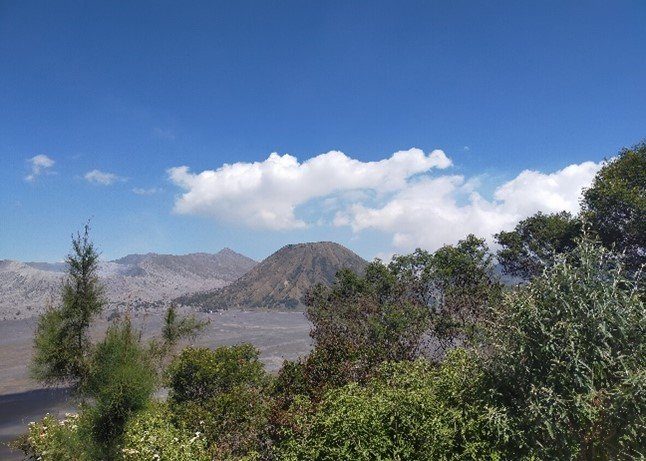
Supporting The Agriculture Sector, ITS Develops Land Mapping Information System
One of the pillars of the Indonesian economy is agriculture and ITS realizes the importance of the agricultural sector. With a team led by Prof. Erma Suryani ST MT PhD, a land mapping information system application (SIPETA) was created as a means to assist Indonesian agriculture by providing information on prices, users, cultivation, infrastructure, operational, strategic, decision support, prediction, and early warning.
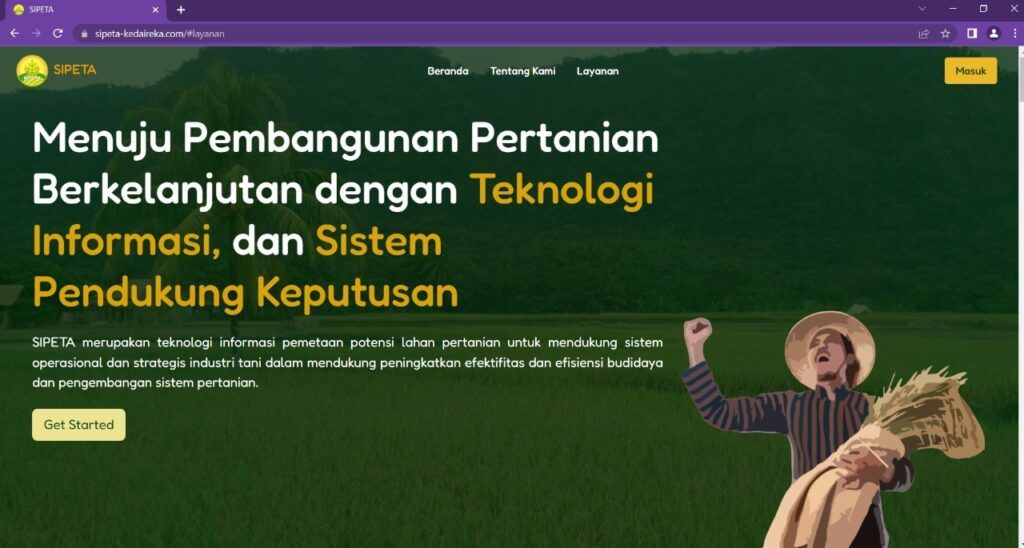

Supporting Land Ecosystems through Action
Rector Statement Letter to ITS’ Commitment on Achieving Sustainable Development Goals (SDGs)
In ITS’ dedicated pursuit of ensuring the conservation, restoration, and sustainable use of terrestrial ecosystems, a significant initiative is encapsulated in the Rector Statement Letter, embodying ITS’ unwavering commitment to achieving the Sustainable Development Goals (SDGs). Within Chapter 3 of this regulatory framework, which specifically addresses environmental concerns, a comprehensive set of guidelines is outlined to govern conservation activities, waste management practices, the safeguarding of delicate ecosystems, and the protection of flora and wildlife. Through the meticulous regulation set forth in Chapter 3, ITS demonstrates its dedication to fostering a campus environment that not only supports academic pursuits but also serves as a model for responsible environmental management and ecological preservation.
Circular Letter of ITS Rector No.95007 Year 2019 concerning Supporting Institut Teknologi Sepuluh Nopember as A Sustainable and Environmentally Friendly Campus.
Another regulation that regulates to ensure the conservation, restoration and sustainable use of terrestrial ecosystems is the Circular Letter of ITS Rector No.95007 Year 2019 concerning Supporting Institut Teknologi Sepuluh Nopember as A Sustainable and Environmentally Friendly Campus. This regulation encourages the realization of the ITS Smart Eco Campus program. The efforts made are improving environmental sanitation, energy efficiency and conservation, and the realization of environmentally friendly transportation.
ITS Smart Eco Campus
ITS Smart Eco Campus is the implementation of policies to ensure the conservation, restoration, and sustainable use of terrestrial ecosystems. ITS Smart Eco Campus is an ITS dedication that uses technology and science generated on campus to create sustainable development in the campus environment. ITS took the initiative to be a forerunner in the development of smart eco campuses, utilizing every aspect of the campus to generate environmentally friendly development. This initiative program is a university commitment to play an active role in the development of science and technology, as well as the application of an environmentally sound lifestyle, which is part of the strategic planning for the construction of the ITS campus and is consistently implemented and developed.
Rector Statement Letter to ITS’ Commitment on Achieving Sustainable Development Goals (SDGs)
With its “Advancing Humanity” motto, ITS is dedicated to contributing to the accomplishing of the SDGs by creating a sustainable and environmentally friendly campus. The development of the Rector’s Statement Letter points out the commitment to reaching the Sustainable Development Goals. As a result, ITS has regulations in place that govern the specifics of monitoring IUCN and other conservation species. Chapter 3 point i states that ITS seeks activities to identify, monitor, and protect IUCN Red List species and national conservation list species affected by activities in the campus environment.
Regulation about Local Biodiversity Included in Planning and Development
ITS’s commitment in achieving SDGs is contained in the Rector Statement Letter to ITS’ Commitment on Achieving Sustainable Development Goals (SDGs). It is specifically stated in Chapter 3 point k that Institut Teknologi Sepuluh Nopember plays a role in regulating the presence of local biodiversity in the campus’s physical development. This strategic focus not only reflects a conscious effort to harmonize human activities with the natural environment but also underscores ITS’s responsibility in preserving and promoting local biodiversity. The alignment with ecological sustainability is further reinforced by the inclusion of these principles in the ITS Sukolilo Campus Master Plan for 2020-2045, highlighting a long-term vision that integrates sustainable development practices into the core fabric of the campus’s growth.
Smart Eco Campus
ITS Smart Eco Campus is an initiative in creating sustainable development in the campus environment by utilizing technology and science developed on campus. ITS believes that the development of science and technology is able to run in harmony with nature. For this reason, ITS took the initiative to become a pioneer in the development of smart eco campuses and utilize every element of the campus to create environmentally friendly development.
TNBTS Handed Over 13 Types of Semeru Orchids for Supporting Conservation on The ITS Campus
The ITS Smart Eco Campus, which has been established since 2011, continues to be empowered and plays an active role in the advancement of environmentally friendly science and technology. The Bromo Tengger Semeru National Park (TNBTS) strongly supports the ITS Smart Eco Campus program, especially if it necessitates plenty of plants and assistance with environmental reforestation. TNBTS finally dared to hand over orchids to ITS after passing experiments in various settings. The orchids supplied were the product of an intense ecological and social study process at Ranu Darungan Resort, Pronojiwo Village, Lumajang, which started in 2017. Arundina graminifolia (D.Don) Hoch. and Acriopsis liliifolia (Koen.) Ormerod were among the principal orchids shipped.
.
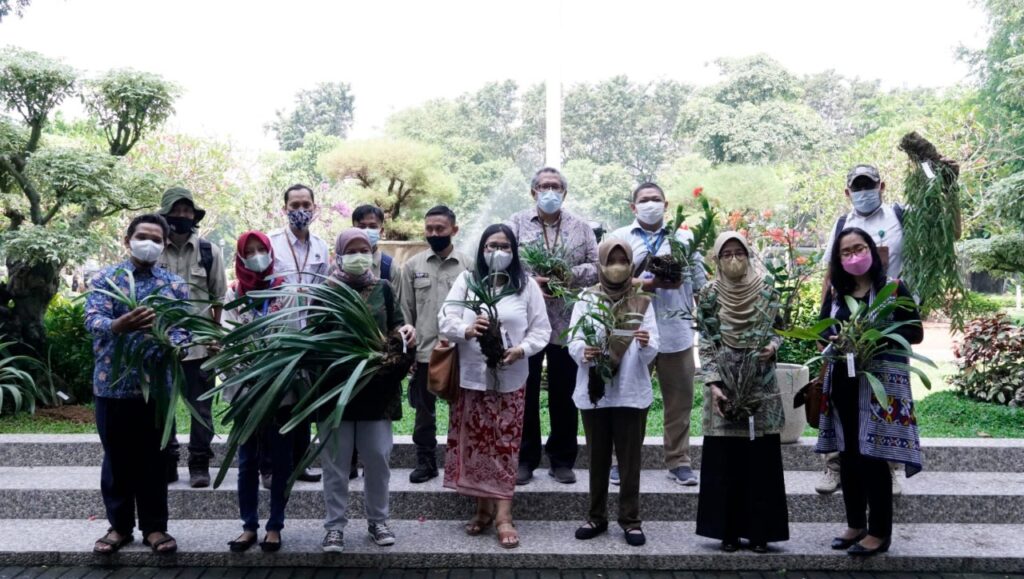

Rector Statement Letter to ITS’ Commitment on Achieving Sustainable Development Goals (SDGs)
Guided by its powerful motto “Advancing Humanity,” ITS underscores its dedication to actively contribute to the realization of Sustainable Development Goals (SDGs) by transforming into a sustainable and environmentally friendly campus. This unwavering commitment is exemplified through the establishment of the Rector’s Statement Letter, a strategic document outlining the institution’s concerted efforts towards achieving the SDGs. Notably, within Chapter 3, point h specifically addresses the regulation of alien species’ impact reduction. Here, Institut Teknologi Sepuluh Nopember ensures a proactive stance against ecological threats by guaranteeing that no invasive alien species enter the campus.
ITS Prepares Bromo Tengger Semeru (BTS) Geopark Masterplan with Bappeda of East Java Province
Indonesia has many potential tourist areas and one of them is the Bromo Tengger Semeru area.ITS sees this area as a strategic opportunity as a geopark for international conservation, education and economic development. With a team under the direction of the Head of the ITS Center for Regional Potential Studies and Community Empowerment, Dr. Sutikno, a geopark masterplan was created with direct orders from the Regional Development Planning Agency of East Java Province.



Kediri Green Open Space Masterplan Realizing Green and Sustainable Infrastructure
One of the ways to protect the environment is by realizing green and sustainable infrastructure. Kediri is one of the cities that wants to realize green and sustainable infrastructure. Therefore, ITS helped create a Green Open Space or Ruang Terbuka Hijau (RTH) Masterplan. This masterplan contains designs to form parks, conservation areas, bicycle lanes, biopores, infiltration drainage, and greening on the rooftops of government buildings.
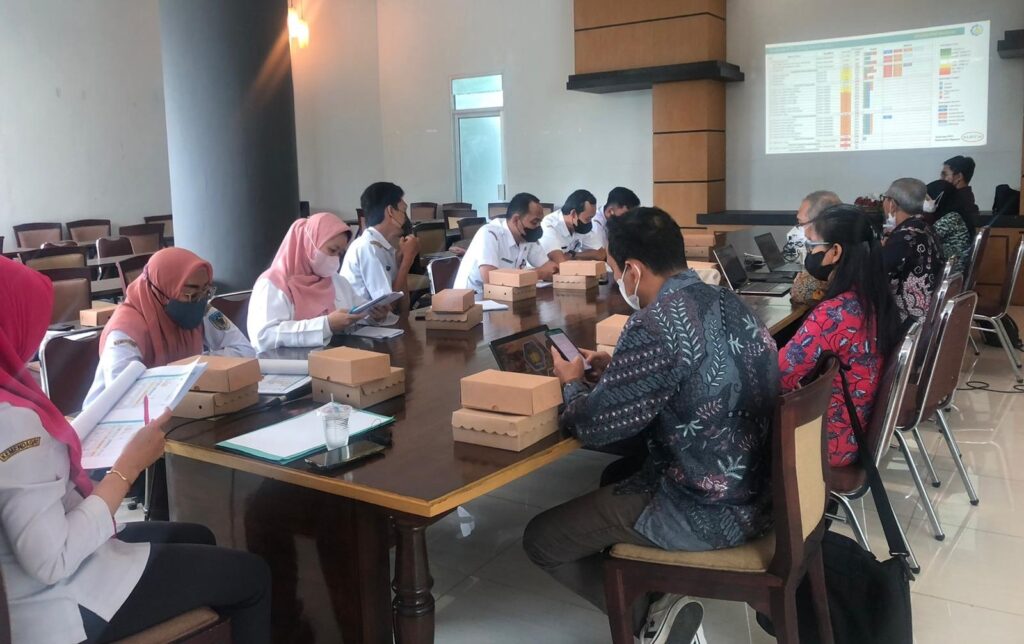

Land-Sensitive Waste Disposal
Sewage Disposal Management
As part of its commitment to environmental sustainability, ITS has established an advanced waste treatment system as a preventive procedure towards water pollution. The regulatory framework for wastewater management at the institution is provided by the Circular Letter of ITS Rector No. T-95007-IT2-TU.00.08-2019. This includes the use of an Anaerobic Baffled Reactor (ABR) Wastewater Management (IPAL) and a simple WWTP with grease traps and settling ponds. These wastewater treatment facilities, strategically located throughout key areas such as the Rectorate, Research Center, Chemistry Department, Environmental Engineering Department, Manarul Ilmi Mosque, Mechanical Engineering Department, and Central Canteen, ensure efficient and responsible wastewater management.
Wastewater Programs Implementation
ITS, in a dedicated commitment to the realization of Sustainable Development Goals (SDGs), actively engages in wastewater treatment as a pivotal element of its environmental stewardship strategy. Anchored by a policy aiming to recycle 30% of its total water needs, ITS has implemented a comprehensive wastewater program across various sectors. This initiative involves the judicious utilization of recycled water, including wudu wastewater and gray wastewater sourced from the Manarul Ilmi mosque’s toilets, serving as raw water for fish ponds and irrigation for plants. The recycling effort extends to different disciplines, such as Industrial Engineering, Mechanical Engineering, and Electrical Engineering, where recycled wudu wastewater is repurposed for watering plants. Furthermore, in the Environmental Engineering department, gray wastewater finds purpose in a constructed wetland. This conscientious approach also extends to specific buildings within the campus, like the Research Center building and the ITS Rectorate building, where recycled wastewater is employed for toilet flushing.
Hazardous Waste Treatment
ITS shows a conscientious and responsible approach to the management of Hazardous and Toxic Waste (B3). Notably, 50-75% of this waste is managed systematically by meticulous grouping, collection, and subsequent submission to a qualified third party. This strategy ensures that B3 waste is treated precisely and in accordance with established laws. ITS has developed particular techniques for the management of hazardous waste in order to prevent water system pollution, stressing its dedication to environmental preservation. The institution also maintains a well-structured flow for managing B3 waste, demonstrating a holistic and methodical approach to waste management that matches with sustainability goals and regulatory requirements.
Circular Letter of ITS Rector No. 50268 Year 2019
In order to ensure the success of the ITS Smart Eco Campus program, ITS controls the usage of plastic. Circular Letter of ITS Rector No. 50268 Year 2019 regarding the Use of Disposable Plastic Bottled Water and Plastic Bags in the ITS Environment is the regulation. Steps in an effort to reduce the use of plastic in the campus environment are reducing the use of single-use plastic drinking water packaging, meeting activities do not use plastic food / beverage wrapping, providing drinking water dispensers, reducing the use of plastic banners, and canteens are encouraged to use organic packaging.
Rector Statement Letter to ITS’ Commitment on Achieving Sustainable Development Goals (SDGs)
With its “Advancing Humanity” motto, ITS is dedicated to contributing to the attainment of the SDGs by creating a sustainable and environmentally friendly campus. The development of the Rector’s Statement Letter indicates the commitment to reaching the Sustainable Development Goals. According to Chapter 3 point 3, Institut Teknologi Sepuluh Nopember advocates paper savings through the use of PLO (paperless office), plastic, styrofoam, and waste-producing materials.
Hazardous Waste Treatment
ITS is concerned about hazardous waste treatment because ITS has an obligation to raise awareness about the importance of protecting our natural resources and mitigating the potential harms of hazardous waste as a form of environmental protection. ITS Hazardous and Toxic Waste (B3) report which 50-75% is handled separately by grouping, collecting and submitting B3 to a certified third party. The types of hazardous waste disposal at ITS are as follows:
- Create a B3 waste management flow at ITS.
- Temporary storage of medical waste in containers and freezers.
- Storage of B3 waste for academic activities in the ITS laboratory in containers and jerry cans.
- The transportation of ITS laboratory B3 waste is carried out with the cooperation of third parties.
Rector Statement Letter to ITS’ Commitment on Achieving Sustainable Development Goals (SDGs)
Policy on hazardous waste disposal in the ITS Campus environment is regulated by the Rector Statement Letter to ITS’ Commitment on Achieving Sustainable Development Goals (SDGs). Environmental pollution can be avoided with proper hazardous waste disposal. According to chapter 3 point e of the Rector Statement Letter, Institut Teknologi Sepuluh Nopember ensures the treatment of Toxic Hazardous Material (B3) waste in compliance with applicable rules and in an environmentally friendly manner.
